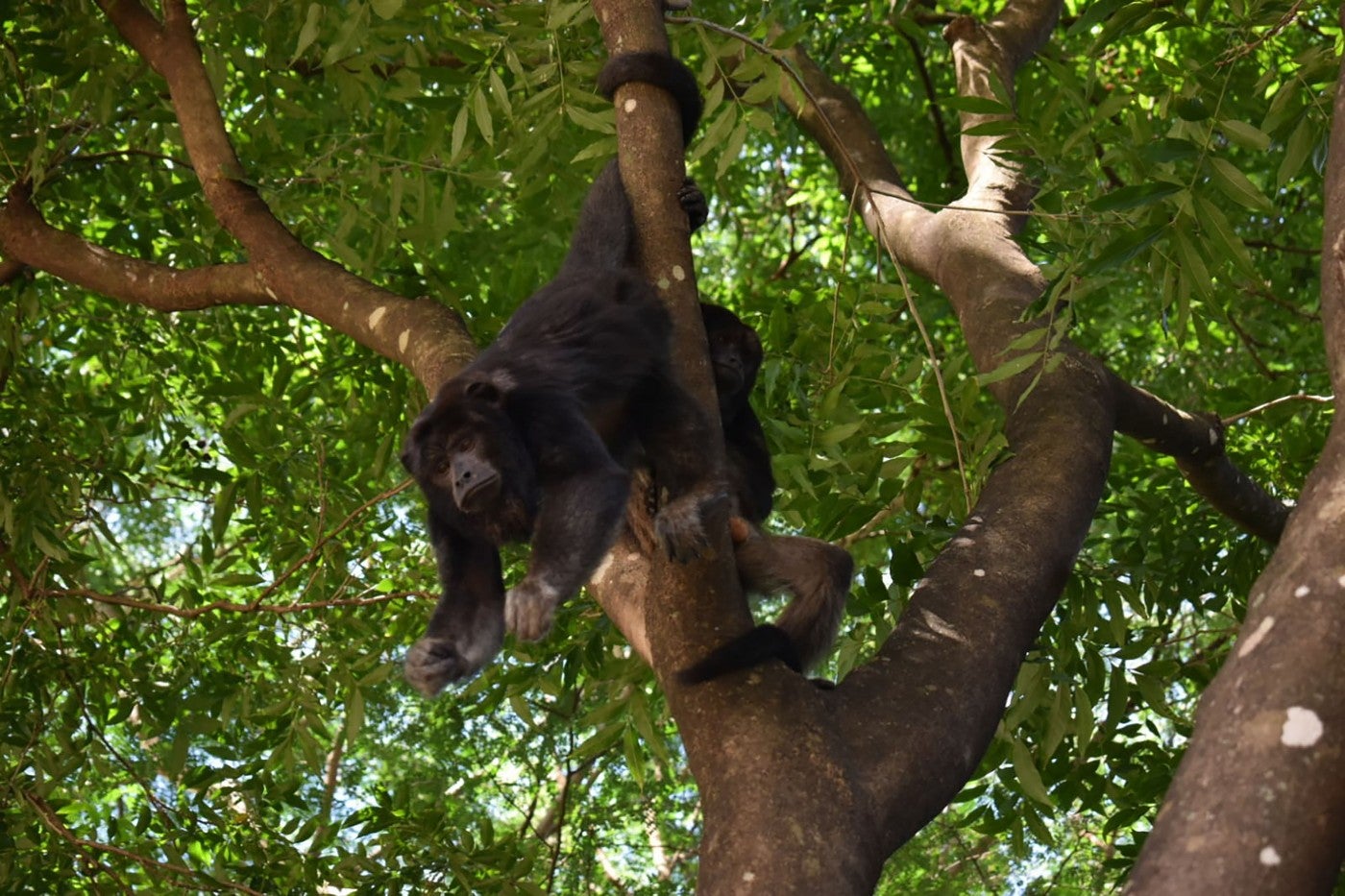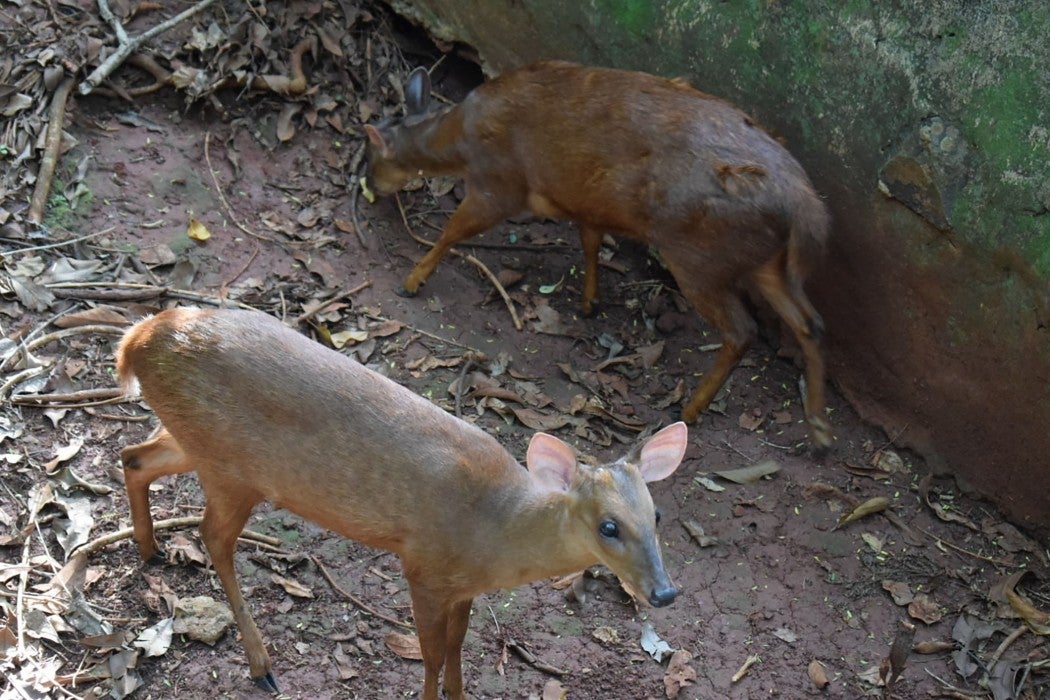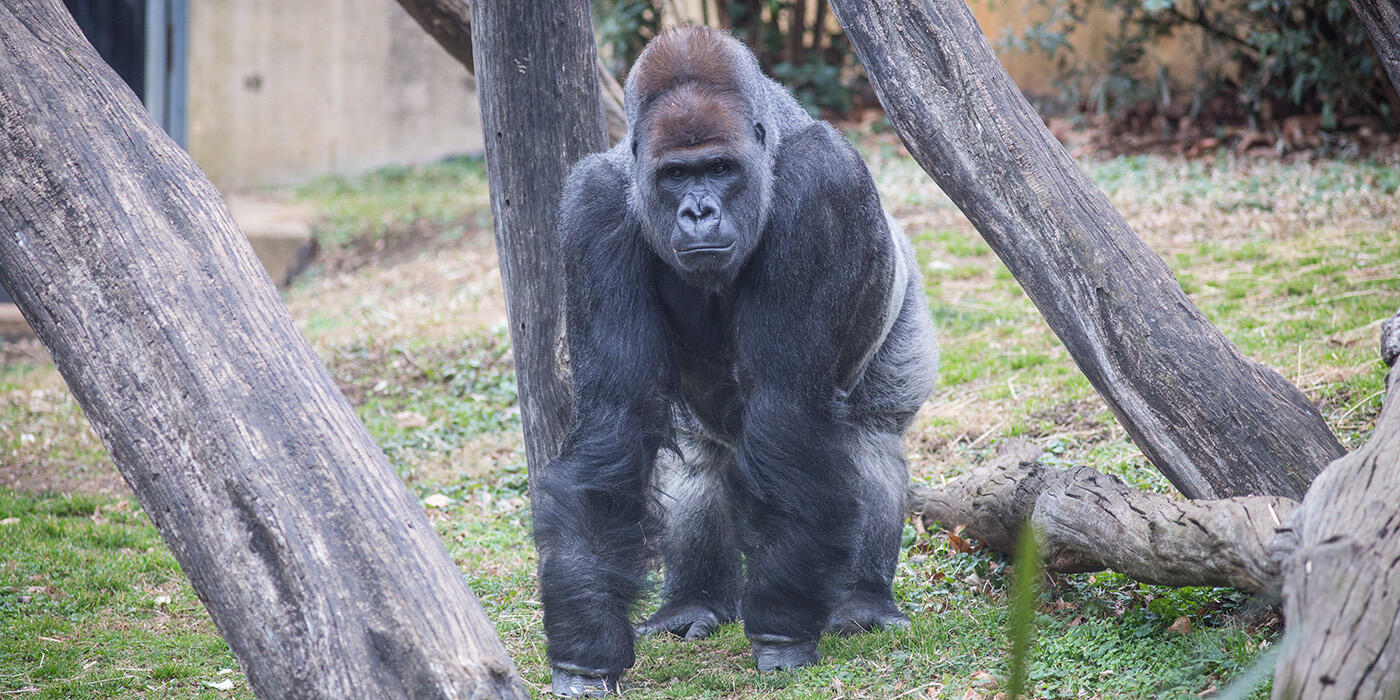#GorillaStory: Moke Is Becoming More Bold
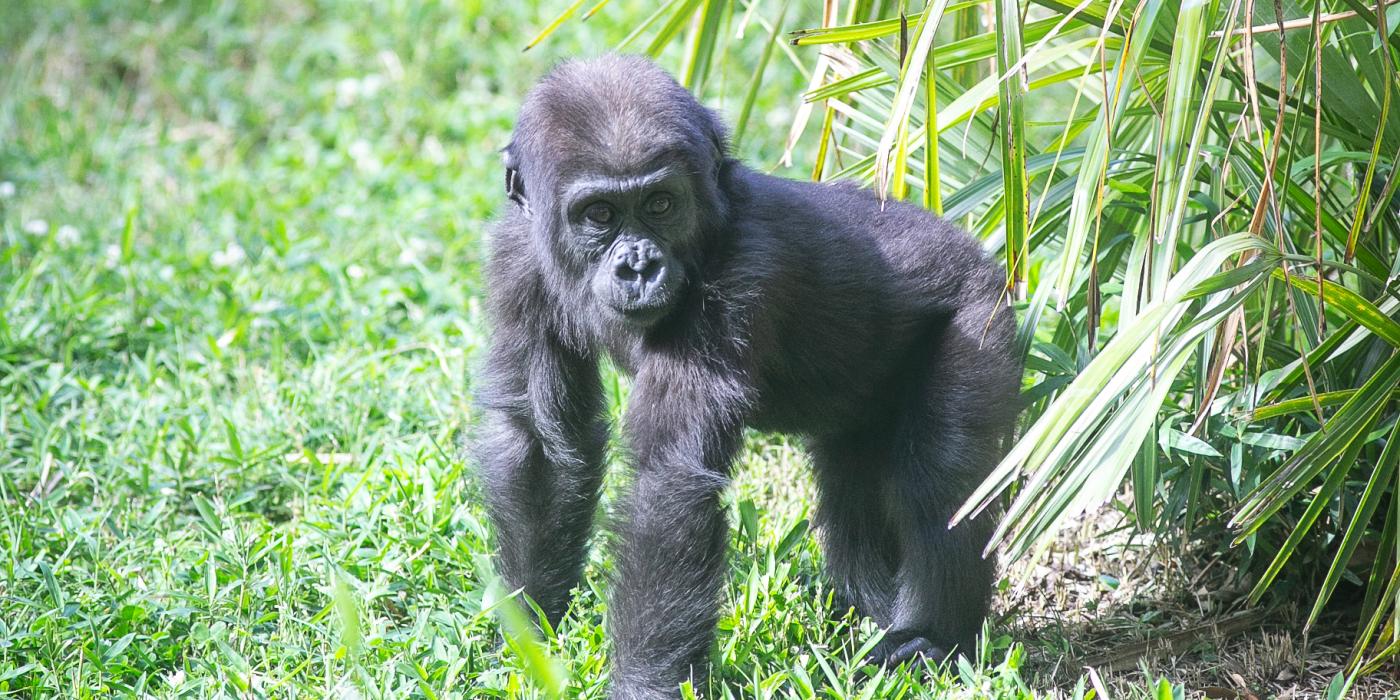
When it comes to a growing western lowland gorilla infant, a lot can change in just a short period. That is certainly the case with 14-month-old Moke. Since our last update two months ago, he has become much bolder, and with his growing confidence, we are beginning to see traces of his mom’s personality.
Moke and Calaya are very close. She is a very confident gorilla and makes her presence known. Moke is very much like her in that regard. They also have some of the same mannerisms. When Calaya wants to express her displeasure about something, she makes a gruff vocalization that sounds like a gentle bark. Moke will do this as well, when one of his troop members has an enrichment item or food that they refuse to share with him, or when his mom prevents him from doing what he wants.
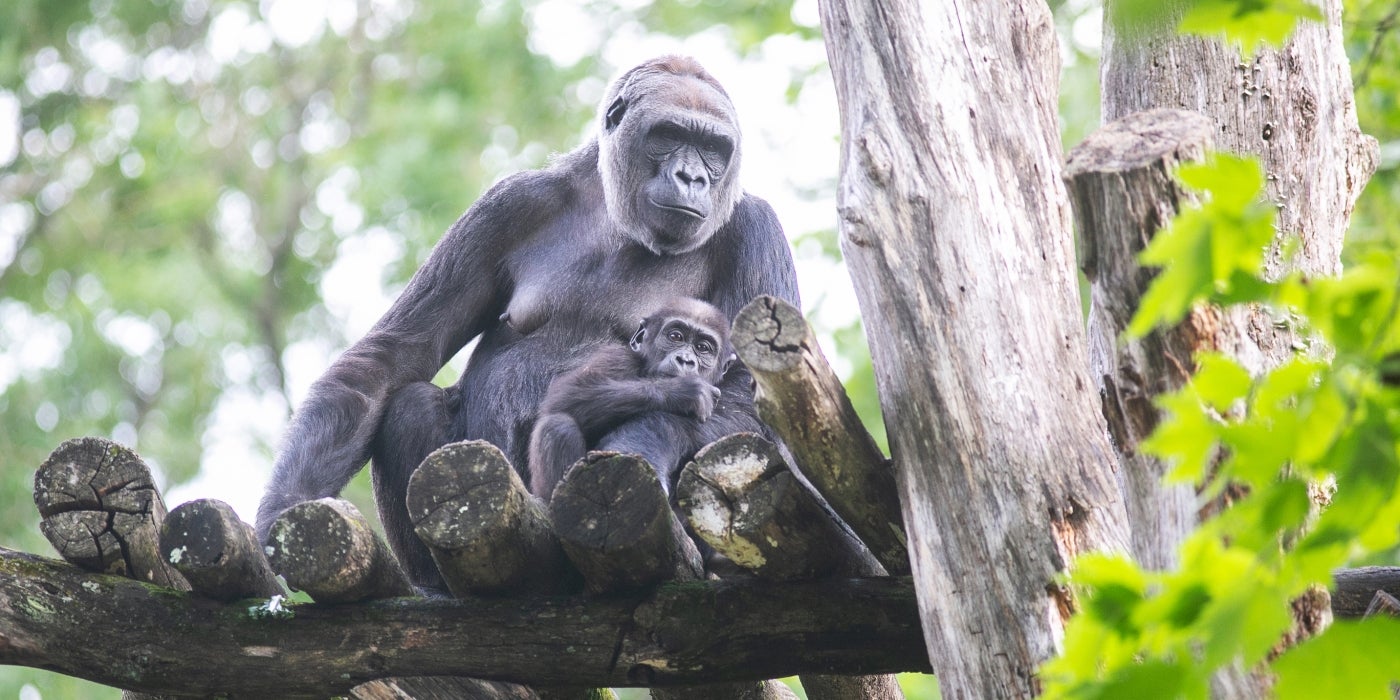
Although Moke’s confidence is growing, we will occasionally see him rely on Calaya for assistance when he gets in a sticky situation. At those rare times, he will make a crying vocalization. If he climbs a tree and cannot figure out how to get back down, he will call out to Calaya. She dutifully comes right over and helps him get where he wants to be. But, that is her role as mom. One minute, she is the disciplinarian. In the next, she is coming to Moke’s rescue.
One of the biggest changes in our young gorilla’s day-to-day life is that he has significantly more freedom to explore. When he was younger, Calaya would always keep him somewhere on her body — clinging to her back, arm or chest — whenever the troop was outside. These days, he is all over the yard! Now, Moke even climbs up and down portions of the multi-tiered structure by himself. We have also seen his best buddy, 10-year-old female Kibibi, scoop Moke up with one arm and run full tilt across the habitat. Calaya does not even bat an eye.
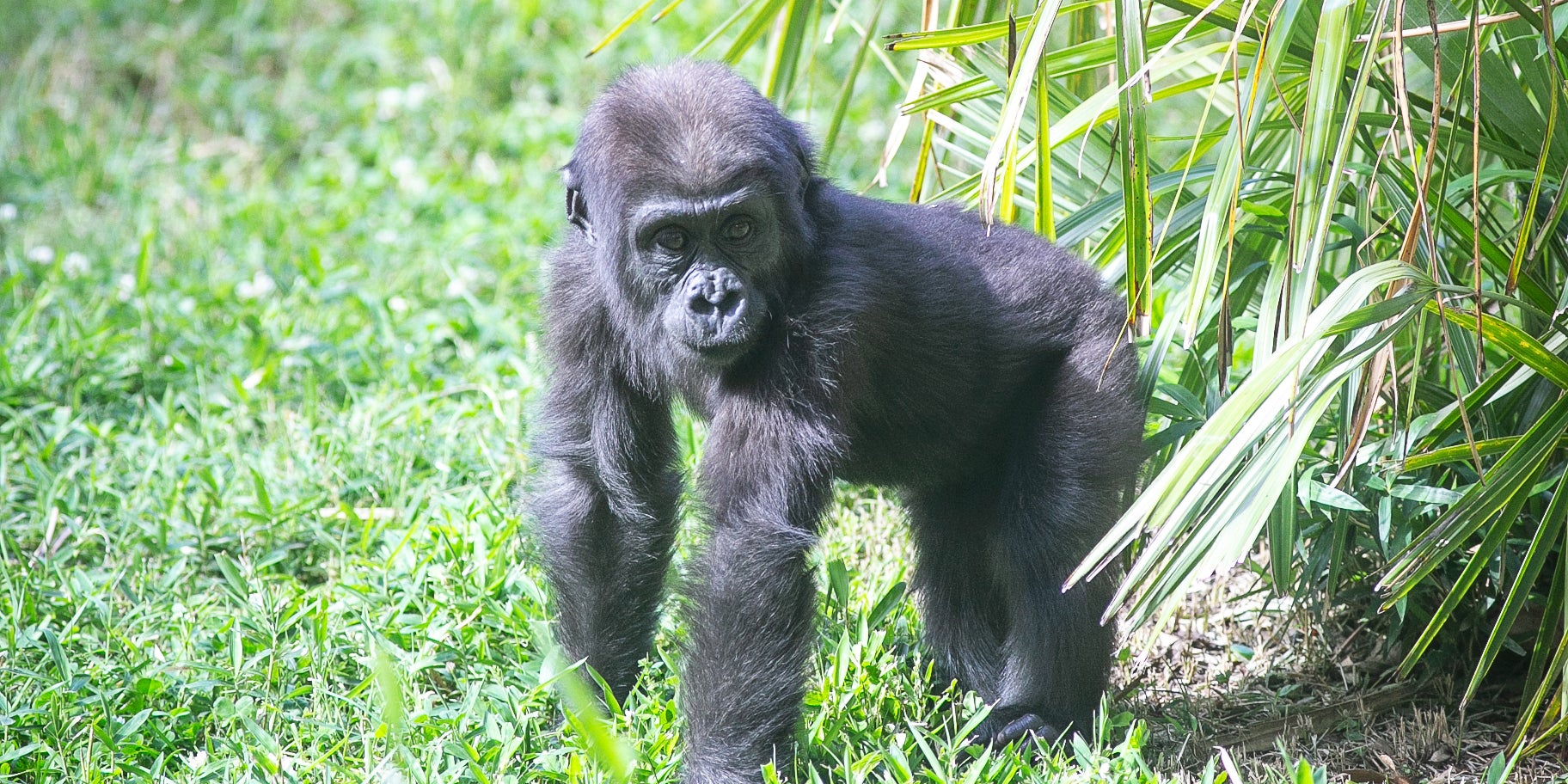
Moke is still nursing, and will continue to do so for several years as long as Calaya permits. At times, she does not comply with his requests to nurse, perhaps because she does not like the sensation — all of his teeth have erupted, after all. Or, she may be encouraging him to try new foods.
When it comes to gorilla etiquette, one thing is clear: sharing is not a word in their vocabulary. Calaya will often pry food out of Moke’s mouth so that she can eat it herself. This has taught Moke that if he wants to keep whatever food he has, he had better take it and run. He will do this with enrichment items, too, especially puzzle feeders that usually contain tasty treats.
The other day, we gave them one of their favorite summer snacks — a small, plastic ball that we pour diluted juice into and freeze. The gorillas really have to knock the ball around to get the slushy juice out. When Moke got his hands on one, he ran around the enclosure and did a display. In addition to being interested in the contents, he also realized he could use it to show off. We see him beat his chest and bang on objects around the enclosure frequently. He seems to relish in all the different noises he is creating!

Moke clearly wants to interact with his dad, Baraka. Whether Baraka is interested in playing is another story. Sometimes, he will indulge his son. At other times, he gently nudges him away. We have not seen Baraka play with Moke like he has played with youngsters in the past, but that may be because Moke is still quite young and fragile. Baraka still occasionally plays with Kibibi; they will lightheartedly chase each other around, wrestle and play bite. We anticipate that he will have a similar playful relationship with Moke when he is a bit older.
If you are planning to visit the Great Ape House this summer, the best time to see the gorillas is around 9 a.m. and 2 p.m., when they receive their diets and enrichment. We hope to see you soon!
Wild about Moke? Visit the Great Ape House at the Smithsonian’s National Zoo to follow his adventures! The building is open from 9 a.m. to 6 p.m. During your next visit, chat with a member of the primate team at the gorilla keeper talk, which takes place at 1 p.m. daily.
Related Species:

